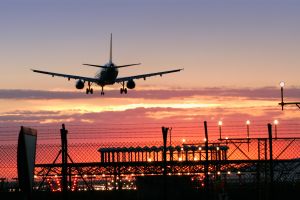United Airlines Grounded By ‘Network Fault’

US passengers delayed by ‘network connectivity issue’ that grounded United Airlines planes
United Airlines has confirmed that a network connectivity issue was responsible for the grounding on many of its aircraft on Wednesday.
The network problem resulted in thousands of US passengers suffering delays to their journeys, and once again highlights the issue of aircraft security as more and more software and other technology is introduced into air travel systems.
Router Problem?
 “We’re recovering from a network connectivity issue & restoring flight ops,” said the airline on its Twitter feed. “We’ll have a waiver on http://united.com to change flights.”
“We’re recovering from a network connectivity issue & restoring flight ops,” said the airline on its Twitter feed. “We’ll have a waiver on http://united.com to change flights.”
This is apparently the second time in recent weeks that the United Airlines has been forced to ground its flights. It is reported that 90 aircraft were grounded as the airline was forced to suspend operations for nearly two hours.
So what exactly went wrong? Well, it seems that the ‘network connectivity issue’ has to do with the flight data that is displayed on airport screens. The failure meant that none of the usual flight data (departure time, flight no, gate no) was displayed on airport screens.
Security reporter Brian Krebs tweeted that the problem had been caused by a faulty router and was not down to a malicious act. “United Airlines tells me today’s outage not result of attack or sabotage; was related to problem with a router,” he tweeted.
Meanwhile, other experts warned that glitches like this will become more common for airlines if there continues to be a lack of conscious software quality management.
“Today, United Airlines suspended operations for nearly two hours today due to automation issues,” said Scott Abney, CEO at software quality specialist SQS USA. “This is just the latest glitch to affect airline industry in recent months. In fact, United Airlines suffered an earlier glitch in June of this year, lasting over 30 minutes.
“And, in April of 2015, American Airlines was grounded due to a software issue with pilot iPads, preventing planes from taking off,” said Abney. “These incidents stress the need to ensure proper quality governance, and how lack of continuous software quality management can lead to potentially catastrophic failures such as these.”
“Increasing demand on airline fleet, combined with ever more complex Airline Information Systems, with customised and off-the-shelf components, have created a need to move beyond the legacy systems the industry is currently relying on, to more efficiently run systems” said Abney. “Providing for improved quality governance and quality management, at the beginning of the software development lifecycle, and throughout, would help mitigate some of these issues.”
Airline Security
Improving airline IT systems has become an issue in the last six months. In May for example, United Airlines launched a bug bounty scheme that offered friendly hackers frequent flyer miles if they could hack into its corporate websites and mobile apps.
The US airline claimed that its unusual bug bounty scheme was the first time an airline had offered such a scheme. But it warned that hackers would be permanently disqualified from the bug bounty program and face possible criminal and/or legal investigation if they strayed outside the tightly controlled attack vectors.
And airline security is on the minds of officials as well. Earlier this year, the US Government Accountability Office warned that in-flight Wi-Fi could be used by terrorists or other hackers to take control of an aircraft’s avionic systems.
Indeed, United Airlines found itself at the centre of security row in April, when one of the world’s foremost experts on counter-threat intelligence within the cybersecurity industry was hauled off one of its flights by the FBI.
Chris Roberts, of Colorado-based One World Labs, had provided warnings to a number of journalists, including Fox News, about the vulnerabilities associated with in-flight technology.
Roberts was on his way to a security conference, but when his plane landed, he was removed, detained and interrogated. The FBI also reportedly confiscated his electronic devices and demanded he give them access to his data.
Are you a security pro? Try our quiz!